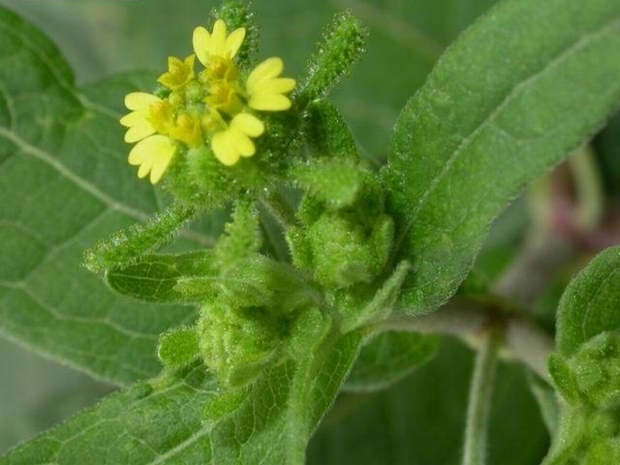Also known as Ledebouriella Root, Siler Root, Radix Ledebouriellae Divaricatae, radix saposhnikoviae divaricata, Saposhnikovia Divaricata root, and Radix Saposhnikoviae, this herb actually means the dried root of Saposhnikovia divaricata (Turcz.) Schischk., a plant in the family of Umbelliferae.
This is a perennial herb, is 30 to 80 cm high, and the whole plant is hairless. Root is stout. Caudex is densely covered with brown fibrous petiole residues. Stem is solitary, and usually with 2 branches. Basal leaves are triangular-ovate, 7 to 19cm long, 2 to 3 pinnately divided, and ultimately with bar-like to lanceolate lobes and entire margin. Petiole is 2 to 6.5cm long. Apical leaves are simplified and with extended sheath. Compound umbel is acrogenous. Cremocarp is ovoid, and when it is young with warts and when it is mature split into 2 carinal schizocarps, which are hung at the top of carpopodium. It blooms from August to September and fruits from September to October.
FANG FENG BENEFITS
Fang Feng root was listed in the highest grade herbs by Shen Nong's Herbal Classic. As mentioned previously, it got its name because of its excellent medicinal uses for exterior syndrome by expelling and preventing wind pathogen. And now let's take a look what the modern pharmacology said about this miraculous herb.
Modern pharmacological actions
1. Antipyretic effects. Experimental observation found that its decoction, half hour after intragastric administration, showed antipyretic effect to febrile rabbits induced by intravenous injection with typhoid mixed vaccine. And the effect could last up to 2 hours;
2. Antishock. Experiment indicated that mice receive a few times of gavage with its decoction showed certain counteraction to shock;
3. Antibiosis. Its water extract has some antibacterial effect to Pseudomonas aeruginosa, Staphylococcus aureus, Streptococcus, and Shigella. In vitro it also inhibits Microsporon lanosum;
4. Analgesia. In the experiment of mice given a gavage of its ethanol extract, it showed that its ethanol extract can significantly improve pain threshold and so did its subcutaneous injection.

Saposhnikovia Divaricata
PROVEN FANG FENG RELATED HERBAL FORMULAS
Chinese herbology defines this herb as acrid and sweet in flavor and warm in properties. And it covers four meridians of bladder, lung, spleen, and liver. Its vital functions are expelling wind to relieve superficies, relieving pain by removing dampness, spasmolysis, and relieving itching. Main Fang Feng uses and indications include exterior syndrome, Headache, body pain, pain in Rheumatoid Arthritis, aching pain in joints, abdominal pain and Diarrhea, discharging fresh blood stool, tetanus, rubella itching, beginning of ulcers, and more. Recommended dosage is from 5 to 10 grams in decoction, powder, or pills.
1) Fang Feng Tong Sheng San, Tang, and Wan
This formula comes from Xuan Ming Lun Fang (Formula from Discussion Illuminating). It is mainly formulated for obstruction of wind-heat and internal-external sthenia. Other important herbal ingredients are Jing Jie (Schizonepeta Stem), Lian Qiao (Forsythia Fruit), Ma Huang (Ephedra), Bo He (Mentha), Chuan Xiong (Szechuan Lovage Root), and so on.
2) Jiu Wei Qiang Huo Tang
This is a formula coming from Ci Shi Nan Zhi (Hard-Won Knowledge). It is basically designed for exogenous cold and dampness pathogens. Other important herbs include Qiang Huo (Notopterygium Root), Cang Zhu (Atractylodes), Xi Xin (Chinese Wild Ginger), Bai Zhi (Angelica Root), and so on.
3) Yu Ping Feng San
Yu Ping Feng San comes from Dan Xi Xin Fa (Dan Xi’s Heart Methods of Treatment). This formula is mainly used for spontaneous perspiration due to exterior deficiency and susceptibility to the wind pathogen. Rest other herbs are Huang Qi (Astragalus Root), Bai Zhu (Atractylodes), and Sheng Jiang (Fresh Ginger Rhizome).

![Diseases, Symptoms, tcm, [tcmwindow.com]](/uploadFile/adImg/2015/11/11/f5cbfcc0-4df5-4646-9b9a-f316651a0199.jpg)





